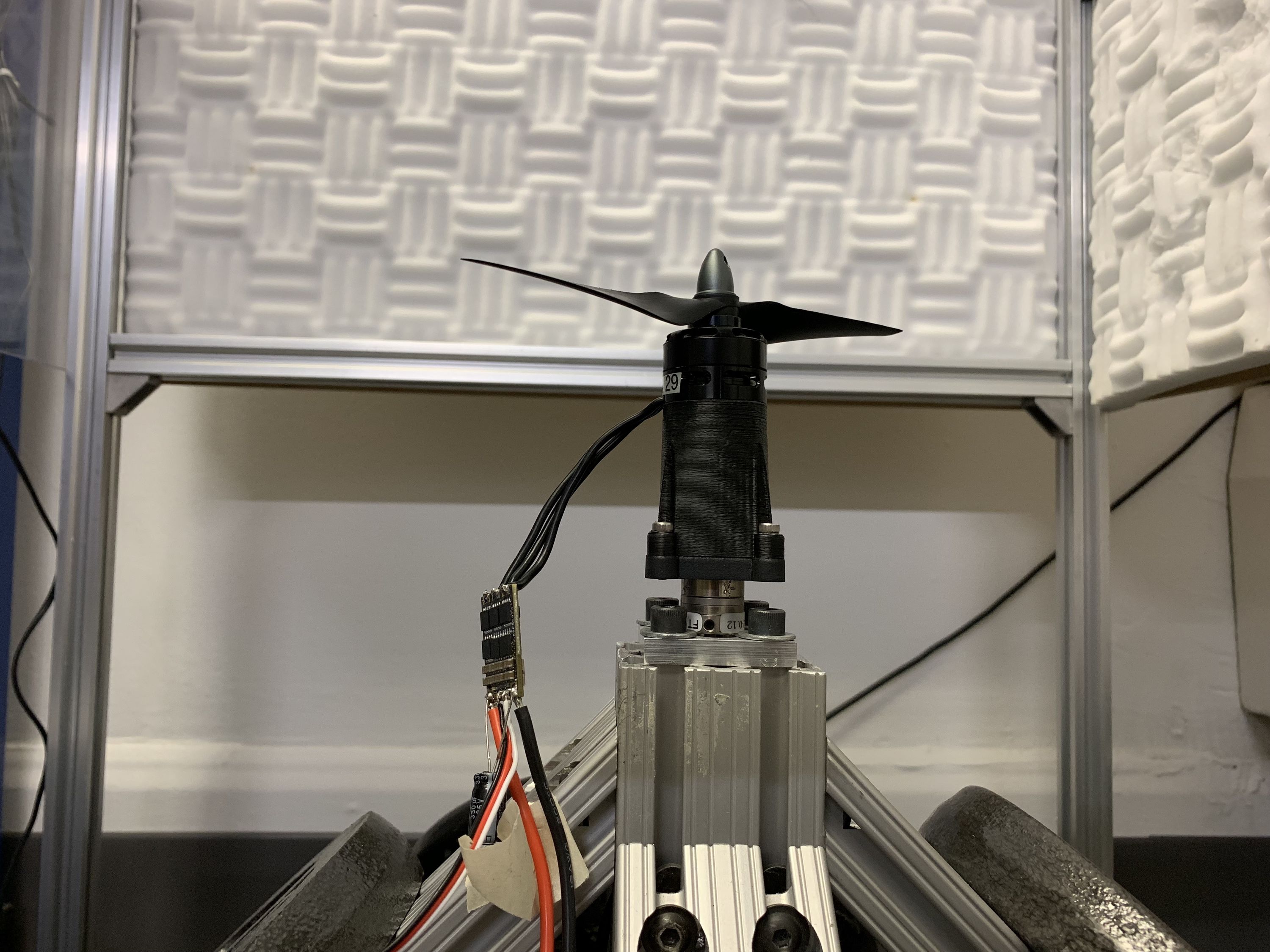Project update 12 of 21
Prop Efficiency
Propulsion System Efficiency with APC Propellers
Overview
In propulsion systems, the amount of power used at a specific thrust is the most direct measurement of the system’s overall efficiency. There are 3 primary factors that determine a propulsion system’s efficiency: the mechanical efficiency of the motor, the electrical efficiency of the motor controller (ESC), and the propeller’s figure of merit, which is a function of a prop’s speed and lift-to-drag ratio. We worked with our manufacturer to ensure our motor’s mechanical efficiency is on par with the high end motors currently on the market. On the ESC side, we are able to boost efficiency significantly because we have a unique method of driving the motor, which we call Field Estimated Control (more to come in a future update). We are continuously working on optimizing the firmware to make the ESC operate as efficiently as possible. The test conducted for this update compares the differences in power consumption between various APC propellers.
Propulsion system efficiency directly affects the flight time, or battery life, of the drone. The more efficient the system, the longer you can fly. Other factors like weight and shape also impact the aerodynamics of the vehicle as a whole, but the propulsion system is largely independent of those factors. In other words, if you optimize the propulsion system, you will almost certainly have the most efficient vehicle possible for a given weight and shape.
Procedure
For ease of comparison we measure the amount of power used to produce 5 N of static thrust. We selected this thrust value for a couple reasons: it is in the middle of the propellers’ thrust range and it requires enough power to reasonably compare the differences in power consumption between each propeller. The tests use a 1500 mAh 5s battery, the battery is fully charged before each response is carried out. Thrust is measured using the ATI nano 17 along with an NI DAQ. During the test, we take 8,000 measurements per second.
Takeaways
Our results show that the APC6x4 propeller is the most efficient when producing 5 N of thrust with the IQ Speed Module. The APC5x3 is only slightly less efficient, while the two reversible props are significantly less efficient. Larger props have a larger disc area, which increases the propeller’s figure of merit, which in turn makes the propeller more efficient, so it makes sense that the 6 inch propellers are more efficient than the 5 inch propellers. This is why helicopters have such large propellers!
Reversible props have a shape that is symmetric in both the forwards and backwards direction, which produces equal thrust in both directions, sacrificing an optimally shaped airfoil. This makes them very inefficient. The 6-inch reversible prop is more efficient than the 5-inch reversible prop, but it is less efficient than both the 5 and 6-inch standard props.
Based on these results, a user looking to maximize the efficiency of his or her drone should use the APC6x4 prop with our motor. It is important to note that there are many propellers on the market. Every prop has its own characteristics, but these test results should provide our backers with a good starting point if propulsion efficiency is important to them.





